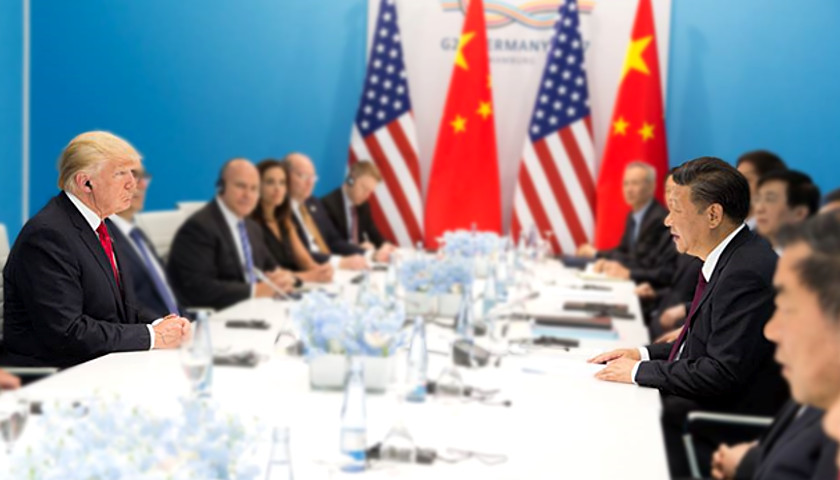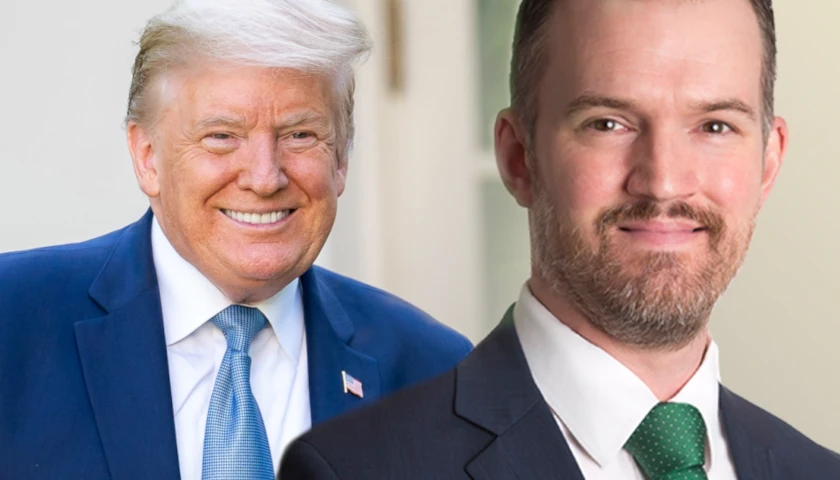By Robert Romano
Once December’s numbers come in, the U.S.-China trade in goods deficit will likely hit an all-time high in 2017 at more than $370 billion, according to U.S. Census data, as President Donald Trump told Chinese President Xi Jinping in a recent phone call that the arrangement is “not sustainable.”
The number will be set off partially by about a $38 billion trade in services surplus. That would put the overall trade deficit with China very close to the 2015 record of $334 billion.
China was granted permanent normal trade relations in 2000 and admitted to the World Trade Organization in 2001. Since that time, U.S. global manufacturing market share has dropped from 13.98 percent in 2000 to 7.91 percent in 2016, while China’s has risen from 4.75 percent to 16.92 percent, according to data compiled by the World Bank.
As far as tariffs go, China’s most favored nation tariff is 4.3 percent while the U.S. sits at 2.7 percent.
On currency, China has kept its fixed exchange rate with the dollar, which today stands at 6.4 Yuan per 1 U.S. dollar, about where it was at the start of 2016. By keeping the yuan artificially low, it is believed China keeps its exports cheaper than they otherwise might be.
One reason China is able to keep a lot of global market share on manufacturing, particularly high-tech goods, is because of its natural advantage on rare earth minerals. So long as countries like the U.S. are not mining their own rare earths, that is going to make it cheaper to just make the stuff in China.
In 2016, Trump ran on getting better trade deals for the U.S., and China was at the top of his list.
Now that Trump has taken office however it appears more pressing concerns over a nuclear North Korea have stalled his trade agenda with China.
In an interview with the Wall Street Journal on Jan. 11, Trump said, “You always have to have flexibility. As an example, we’ve been much tougher on China, but not nearly as tough as I would be, but they are helping us a lot with North Korea.”
Meaning, whatever Trump had in mind to do with China, protecting national security by leveraging China over North Korea is the current policy. The danger of course is that it incentivizes China to foster nuclear weapons for North Korea as a means of blocking the U.S. asserting itself on trade issues.
It’s a catch 22. If the U.S. tries to take a harder line on trade, and China can dangle a nuclear North Korea as the consequence. Or, the U.S. can take a softer line, hoping to get help in disarming but only encouraging China to help North Korea finish its work on its weapons.
Something’s got to give.
Others worry that China might decide to dump its vast horde of U.S. treasuries and other dollar-denominated assets. To a certain extent that’s already happened. When China’s own economic bubble popped in 2013, its treasuries holding peaked at $1.3 trillion in November of that year. Afterward, it began drawing down its position to a low of $1.05 trillion in Nov. 2016. But then it began buying again until it peaked at $1.2 trillion in Aug. 2017. Now it’s drifting down again.
No problem. Overall, China holds 8 percent of the $14.8 trillion publicly held debt, that is the non-Social Security and Medicare trust fund-held debt. It would require coordinated action with other nation-states to achieve a run on treasuries and the dollar. Even if China were to sell it all tomorrow, interest rates would rise, but markets could likely absorb the hit over time.
One silver lining on the overall trade deficit numbers, as a percent of the economy, it has been dropping in recent years, peaking with the oil bubble in the late 2000s. A good chunk of the trade gap is dependence on foreign oil, but as the price has dropped, so has the trade deficit. In 2016, it was less than 3 percent.
Another bright spot is that in the short-term, the trade deficit tends to widen when the economy is growing faster. Meaning the current widening of the trade deficit in 2017 could actually be a sign of economic strength and faster growth, even if over the longer term the trade deficit is a net drag on overall growth as imports are subtracted from GDP.
Overall, Trump still has a lot of leverage to use with China with trade as his biggest tool. Failure to defend fundamental economic sovereignty against China may come at the cost of a more destabilized region in the form of a nuclear-armed North Korea. China may need to feel what the trade disincentive is like to get on board with disarmament.
More fundamentally, the President must be able to act in the nation’s economic interests without sacrificing the ability to defend our national security. They are not mutually exclusive. Trump has to thread the needle.
– – –
Robert Romano is the Vice President of Public Policy at Americans for Limited Government.
Reprinted with permission from NetRightDaily.com






